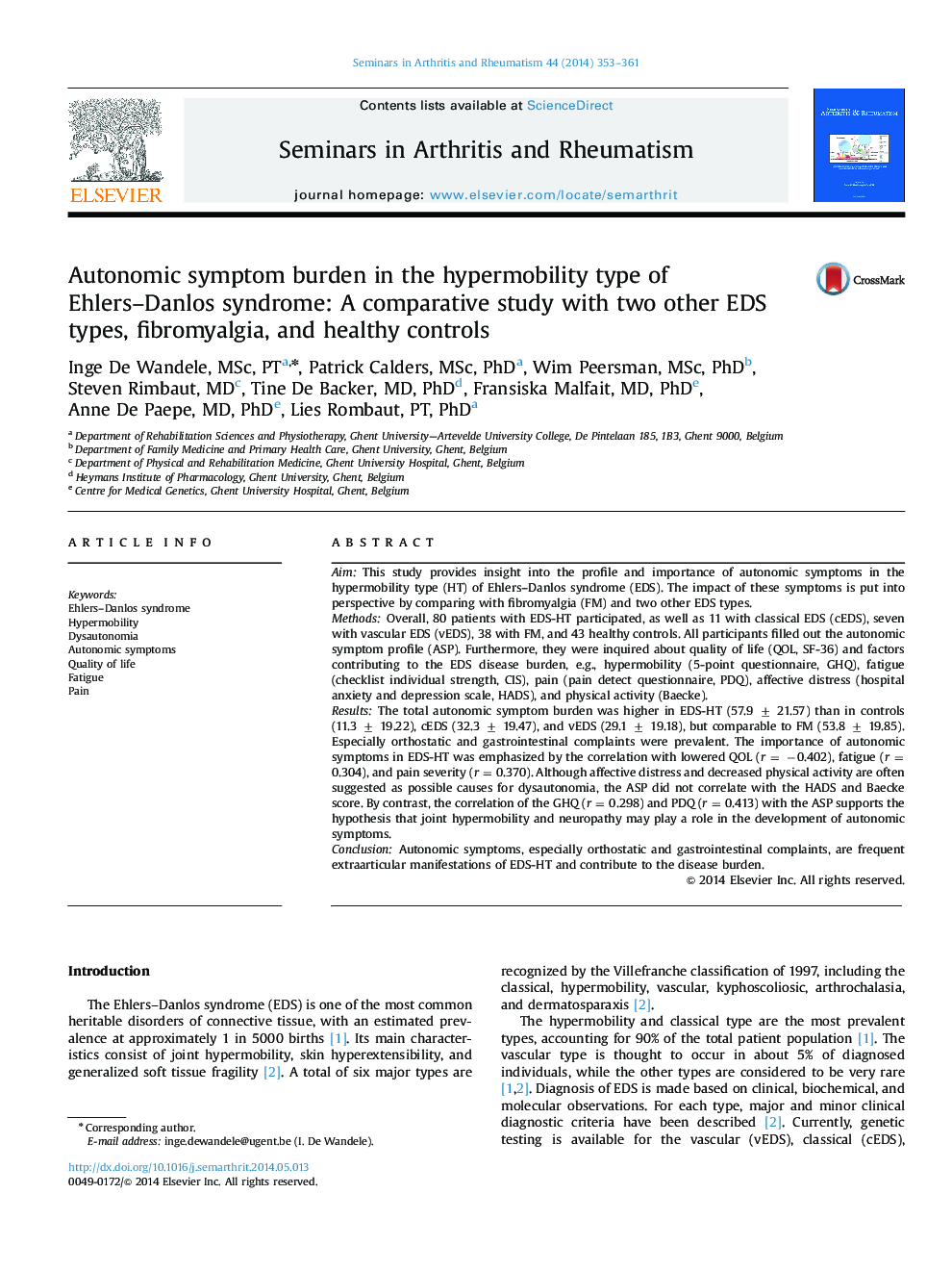| کد مقاله | کد نشریه | سال انتشار | مقاله انگلیسی | نسخه تمام متن |
|---|---|---|---|---|
| 5887801 | 1151748 | 2014 | 9 صفحه PDF | دانلود رایگان |

AimThis study provides insight into the profile and importance of autonomic symptoms in the hypermobility type (HT) of Ehlers-Danlos syndrome (EDS). The impact of these symptoms is put into perspective by comparing with fibromyalgia (FM) and two other EDS types.MethodsOverall, 80 patients with EDS-HT participated, as well as 11 with classical EDS (cEDS), seven with vascular EDS (vEDS), 38 with FM, and 43 healthy controls. All participants filled out the autonomic symptom profile (ASP). Furthermore, they were inquired about quality of life (QOL, SF-36) and factors contributing to the EDS disease burden, e.g., hypermobility (5-point questionnaire, GHQ), fatigue (checklist individual strength, CIS), pain (pain detect questionnaire, PDQ), affective distress (hospital anxiety and depression scale, HADS), and physical activity (Baecke).ResultsThe total autonomic symptom burden was higher in EDS-HT (57.9 ± 21.57) than in controls (11.3 ± 19.22), cEDS (32.3 ± 19.47), and vEDS (29.1 ± 19.18), but comparable to FM (53.8 ± 19.85). Especially orthostatic and gastrointestinal complaints were prevalent. The importance of autonomic symptoms in EDS-HT was emphasized by the correlation with lowered QOL (r = â0.402), fatigue (r = 0.304), and pain severity (r = 0.370). Although affective distress and decreased physical activity are often suggested as possible causes for dysautonomia, the ASP did not correlate with the HADS and Baecke score. By contrast, the correlation of the GHQ (r = 0.298) and PDQ (r = 0.413) with the ASP supports the hypothesis that joint hypermobility and neuropathy may play a role in the development of autonomic symptoms.ConclusionAutonomic symptoms, especially orthostatic and gastrointestinal complaints, are frequent extraarticular manifestations of EDS-HT and contribute to the disease burden.
Journal: Seminars in Arthritis and Rheumatism - Volume 44, Issue 3, December 2014, Pages 353-361